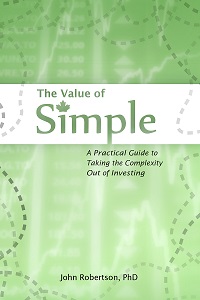…or Real Estate: Changing Sales Mix and the Effect on Averages.
The average is a very important way for us to reduce the complexity of a large number of things down to one measure that we can then compare to other groups of things. It’s a simple grade-school concept, yet we must at times remember that there are different ways of creating an average, and they may give different results depending on how the raw data is distributed. There are issues of weighting data, and that we have to be aware that sampling subsets of a large population does happen, and that how data is sampled can affect the outcome.
For the real estate boards (e.g., TREB) they report the “average house price” which is a simple average of all the property sales in a given region within a given month. Now for an organization that is primarily concerned with how much commission-generating activity is taking place, a simple average is great (multiply the average by the number of sales and you get the total sales volume). However, it doesn’t truly answer the question many people have, which would be something like “how much more/less is my house worth?”
The sales mix — how many condos versus detached houses, which neighbourhoods have more activity — affects the average, especially when it changes. You see, the average price in a month or a year is not a census; not the average of all properties across the city, weighted by how many of each there are, but rather the average of those that sold. With a large enough city over relatively normal periods the distinction shouldn’t matter that much: the properties that sold should be a random and consistent sample across the city. Maybe condos turn over more often than houses, but as long as that’s a constant influence over time then you can still make year-to-year comparisons.
But Toronto has seen a massive real estate boom over the last decade that included an insane amount of condo construction: 50,000+ units built and another 60,000+ under construction*, in many cases removing single-family houses in the process. And the sales mix has changed even more, as condos become investment commodities to flip rather than places for long-term occupation.
The result? The increase in average price that so many find concerning may actually be understating the degree of price increases that have occurred (though price-to-rent analyses sidestep this). Moreover, as this effect unwinds it will mask price decreases. For an example of the change in weightings affecting the average, see the May condo numbers: 416 condos were up 1.2%, 905 condos up just 0.6%, yet the overall GTA average was up more than either at 1.6%. This seemingly illogical result came about because the sales volume dropped so much more in the 905 — these lower-priced units counted for less in 2013 than in 2012 so the overall average was up much more than any single component. With a large enough swing in sales (the weighting factors) you could see average prices rise even if each individual component had decreasing prices.
My thinking is that condos are the most speculative component in Toronto real estate, so as the market starts to correct the sales volume (and prices for that matter) on condos will be affected more. Indeed, sampling** a few months shows that this year is showing a decrease in the ratio of condo sales to detached sales from the previous few years (detailed data doesn’t go back far enough to show how the mix changed as a bubble inflated). So as we get through the Wile E. Coyote phase of the correction, the change in average prices may continue to look positive (or less negative) due to changes in the sales mix, even if the actual prices on individual properties are going down.
Now, it’s not a huge effect: a few percent one way or the other, and it doesn’t compound. But when you have a market on the edge, with large changes in sales mix happening, where a few percent one way or the other would have large psychological effects, then it’s an effect worth keeping in mind.
In a similar vein, there seemed to be a lot of media attention around the last two Urbanation rental reports, which described steep increases in Toronto rent costs. However, I seriously question the reliability of these reports, particularly when it comes to their sampling.
Ideally, when looking at any population we’d have the full set of data to analyze. But you can’t measure the length of every fish in the lake without draining the lake to catch them all, and for large populations even if you could measure everything you’d end up with a massive amount of data to crunch. It would be nice to have the rent rates of every rental agreement everywhere, or to run an appraisal on every property every year so we could analyze the data as we see fit. But that wouldn’t be worth the cost and effort of doing so, so realistically we have to sample: pick a few fish out of the lake, phone up a few potential voters, or get information on some rental agreements out of the city and find out what the average of those are, estimate how our sample differs from the overall population and go on with our lives. A good sample should be representative, random, and appropriately sized.
Urbannation doesn’t provide their raw data (indeed, they charge an arm and a leg to get at the report), but the information in the press tells us that with several thousand data points it’s likely large enough. You could probably get a good sample with just a few hundred representative rentals. However, it is not representative. Their report is based on the sample of all rental agreements that go through the MLS system. When you’re talking resale housing transactions MLS is a great sample — it captures almost the entirety of the market, and there isn’t necessarily an obvious bias to what’s missed. For rentals however, MLS is a small slice of the market and is definitely not representative. Many landlords advertise their rental using low-cost methods such as ViewIt, Craigslist, Kijiji, or the local hospital/university bulletin board. The standard charge for an agent to list a rental on MLS is one month’s rent. For a 1-year lease that might get renewed for 2-3 years that’s ~3-8% of the gross — quite the cut for advertising and an illegal “custom” lease on what is already a loss-making “investment”. So we can’t really expect any old random landlord is going to go and get an agent to list their rental on MLS with some equal probability. In my anecdotal experience, the MLS listings are largely from cases where the landlord already has a relationship with the realtor, either a recent sale (“now that I’ve sold you the place, how about I get a tenant for you?”), or a current listing that’s failing (“geez, 45 days and not a single bid, how about I help you rent it out and we can see if the market improves in the spring?”), or is completely out to lunch/out of town.
The Urbannation rental report might say less about the increase in rental demand than it does about the increased use of MLS for rentals. The headline could just as well have been “rental demand unchanged in Toronto; Sales collapse means more people with more expensive units resort to renting out via MLS.” We don’t know how the represented areas and units changed over time (perhaps a few years ago cheap CityPlace units were over-represented while it was newly flipped; now maybe more inherently expensive developments are dragging the average up).
Now I don’t personally track the downtown condo lease market so I can’t say what correlation there is between the Urbannation report/MLS data and what’s actually happening with like-to-like rents. I can say that it does not look like the outskirts of the 416 (North York in particular) are experiencing anywhere near the same level of rent inflation as they suggest. Indeed, anecdotally I’ve heard a few cases of landlords voluntarily freezing rent north of the 401, as even the 2.5% rent control increase can’t be justified by the market rents that could be sought if a tenant left (which is likely reflected in the 2014 cap of 0.8%).
* – the 2nd figure is across the GTA, so perhaps closer to 40,000 units under construction in Toronto proper.
** – I wasn’t able to find the data in a spreadsheet for ease of analysis, so I had to manually parse a few months and build my own spreadsheet. I wasn’t going to go through that for more than a few sample months.


 Questrade: use QPass 356624159378948
Questrade: use QPass 356624159378948 Passiv is a tool that can connect to your Questrade account and make it easier to track and rebalance your portfolio, including the ability to make one-click trades.
Passiv is a tool that can connect to your Questrade account and make it easier to track and rebalance your portfolio, including the ability to make one-click trades.